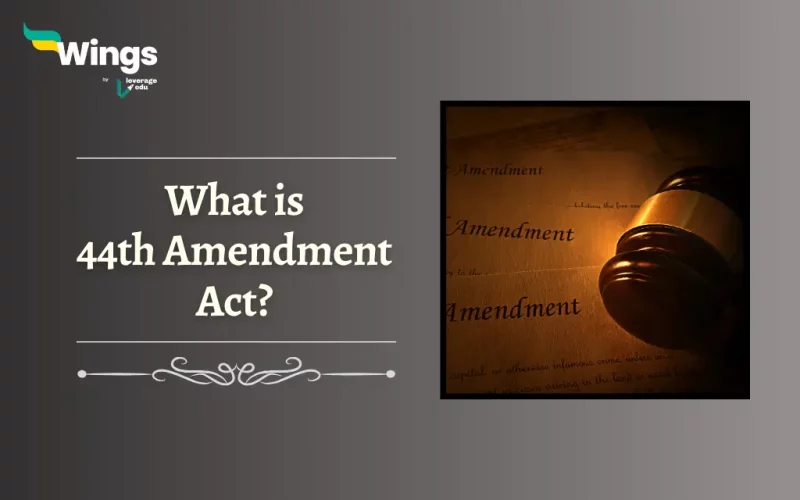The 44th Amendment Act of the Indian Constitution was passed in 1978 when Indira Gandhi was the Prime Minister. It aimed to address problems arising from the previous 42nd Amendment Act passed during the Emergency(1975 to 1977). Furthermore, this time saw a decline in civil rights, and the 42nd Amendment increased the Government’s power, hence raising questions about potential misuse. Consequently, the 44th Amendment Act functioned as a remedial way that sought to bring back a balance between the Executive power and Fundamental Rights. This blog summarises the significant changes made to the 44th Amendment Act.
What was Added to the 44th Amendment Act?
Table of Contents [show]
Moreover, several aspects were added by the amendment:
- Strengthened Judiciary: The Act restored the power of Judicial Review for the Supreme Court and High Courts.
- Hence, this meant they could once again examine the validity of laws passed by the Legislature.
- Stricter Emergency Provisions: The definition of a National Emergency was narrowed.
- A proclamation could only be issued in case of “war, external aggression or armed rebellion,” not for a mere “internal disturbance.”
- In addition, this limited the Government’s ability to restrict Fundamental Rights during Emergencies.
- Parliamentary Control: The Act guaranteed that the advice of the Council of Ministers (Cabinet) was not binding on the President of India in all situations.
- The President could now ask them to reconsider their advice, thus promoting a check on Executive power.
| 44th Amendment Act of 1978 | |
| Aspect | Changes Introduced |
| Judiciary | Restored power of Judicial Review for Supreme Court and High Courts. |
| Emergency Provisions | -Narrowed definition of national emergency to “war, external aggression, or armed rebellion” -Emergency proclamation requires written advice from the Cabinet. |
| Parliamentary Control | The president can return Bills for reconsideration by Parliament. |
| Fundamental Rights | The President of India can ask Council of Ministers to reconsider advice. |
| Amending the Constitution | Restored stricter process for Amendments. |
| President’s Power | The President of India can ask the Council of Ministers to reconsider advice. |
| Parliament and State Legislatures | Term restored to 5 years (changed from 6 years by 42nd Amendment). |
| Directive Principles | Added emphasis on environment and forests. |
| Anti-Defection | Strengthened safeguards against anti-defection. |
What was Abolished by 44th Amendment Act?
The 44th Amendment abolished some controversial changes made by the 42nd Amendment such as:
- Right to Property: The Right to Property was removed from the list of Fundamental Rights.
- However, it remained a legal right, with provisions to make sure fair compensation in case of acquisition by the Government.
- Undue Power to Amend: The 42nd Amendment made it easier to amend the Indian Constitution. The 44th Amendment restored the original, stricter process for amendments.
Related Blogs
| Article 21 | Features of Democracy in India |
| What is Universal Adult Franchise? | Amendment of the Indian Constitution |
I hope this blog answers your query on What is 44th Amendment Act. Moreover, you may even read more blogs and empower yourself with knowledge regarding Civics and Polity!
 One app for all your study abroad needs
One app for all your study abroad needs















 45,000+ students trusted us with their dreams. Take the first step today!
45,000+ students trusted us with their dreams. Take the first step today!
